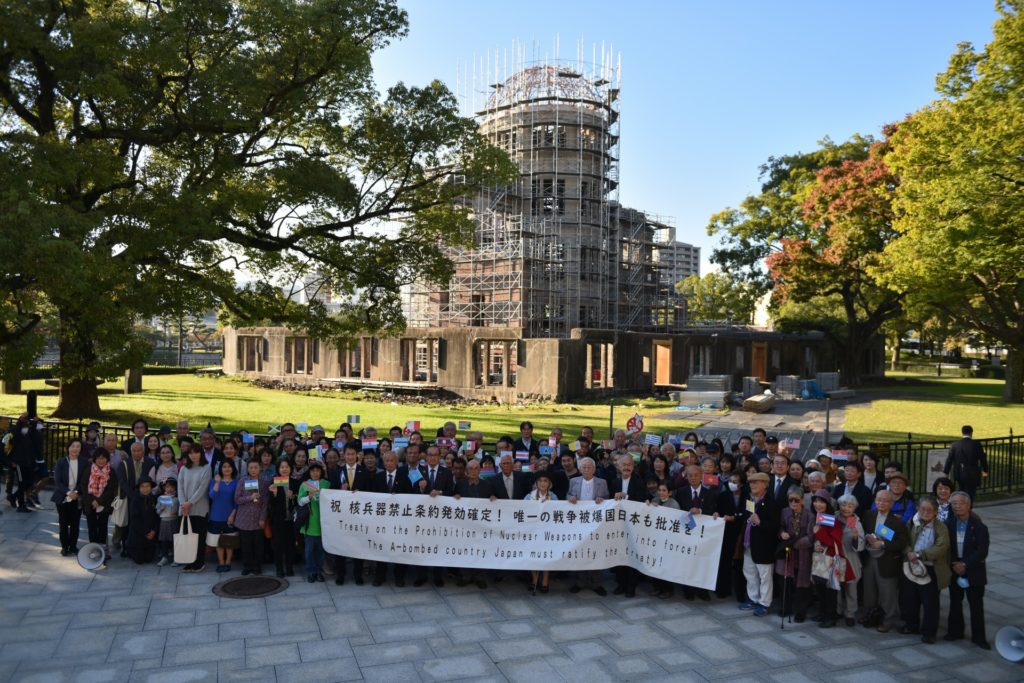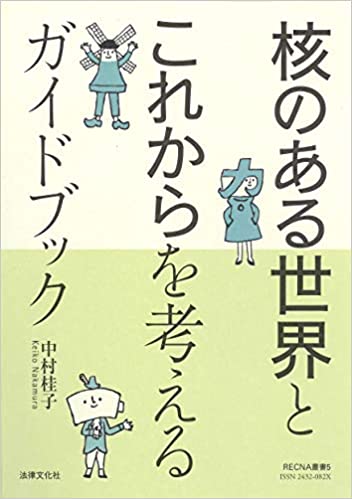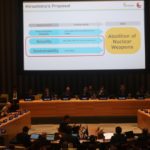[Interview] The Treaty on the Prohibition of Nuclear Weapons
It has been decided that the Treaty on the Prohibition of Nuclear Weapons (TPNW), which was adopted in 2017, enters into force on January 22, 2021, owing to the number of ratifying states having reached fifty in October, 2020. Regarding the TPNW, we first interviewed Ms. NAKAMURA Keiko, Associate Professor at the Nagasaki University Research Center for Nuclear Weapons Abolition (RECNA).

that state parties of TPNW reached 50 on October, 2020.
What exactly is the Treaty on the Prohibition of Nuclear Weapons?
“As the name suggests, it’s the first international treaty to comprehensively prohibit nuclear weapons. Specifically, it prohibits a state from possessing, producing, or using nuclear weapons. Even if a state doesn’t possess nuclear weapons, it also prohibits that state from accepting the deployment of an ally’s nuclear weapons in its territory, urging the possession of nuclear weapons for mutual protection, or assisting in the usage of nuclear weapons.
“The treaty is unique for also clearly describing the rights of those victimized by the usage and testing of nuclear weapons. A state party to the treaty is required to provide aid to any victims within its borders and to restore the environment of any areas contaminated by nuclear weapons, and is also responsible for providing assistance and restoring the environment in response to other countries that have used nuclear weapons or conducted nuclear tests.
“Also, it is prescribed that, should a nuclear-weapon state become party to the treaty, that state shall present its plan for how to achieve the total elimination of its nuclear arsenal and pledge implementation.”
How is it different from the Treaty on the Non-Proliferation of Nuclear Weapons (NPT) and the Comprehensive Nuclear-Test-Ban Treaty (CTBT)?
“Regarding nuclear weapons, presently the largest international legal framework in the world is the NPT, and in addition to most member states of the United Nations, five nuclear-weapon states are also member states. The biggest difference between the NPT and the TPNW is whether or not they completely deny the right to nuclear weapons. They both share the goal of abolishing nuclear weapons, but with regard to the nuclear-weapon states, the NPT in a sense tolerates the present state of affairs despite the fact that it prescribes nuclear disarmament in the future.
“The CTBT also simply prohibits nuclear weapons testing, and doesn’t prescribe the prohibition of possessing or using nuclear weapons. Now that the TPNW has come into force, one might presume that both the NPT and CTBT are no longer necessary, but that would be a mistake. In order to advance nuclear disarmament, the present state of which is showing signs of having reached an impasse, the TPNW has assumed the role of taking a fresh stance on the situation. It is of upmost importance to successfully attain cooperation with various legal frameworks such as the TPNW, NPT, and CTBT, and accomplish the abolition of nuclear weapons.”
Why haven’t countries under the so-called nuclear umbrella, including Japan, ratified the treaty?
“Because the TPNW denies the illusion that ‘nuclear deterrence protects the peace and safety.’ The countries under the nuclear umbrella believe that the nuclear weapons of their allies are indispensable to protecting the safety of their own countries, and if those weapons didn’t exist, then they would be vulnerable to attack as if unarmed. However, it’s a misplaced assumption that the nuclear umbrella is an impregnable defense. Contrary to protecting our safety, so long as nuclear weapons exist on this earth, there will always be the possibility of them being used, including being launched by mistake.
“Since the TPNW prohibits assisting, encouraging, or inducing the possession of nuclear weapons, for Japan, which is reliant upon the nuclear umbrella of the United States, or member states of the North Atlantic Treaty Organization (NATO) to approve it would result in them denying their own circumstances. Since the U.S. nuclear weapons are deployed in some NATO member states, this, too, would violate the TPNW’s prohibition on deployment.
“Some believe the TPNW is pointless because the nuclear-weapon states are not party to it. This is partially true, but also partially irrelevant. Granted, if the nuclear-weapon states themselves don’t reduce their arsenals, then not one nuclear weapon will disappear. However, the true purpose of the TPNW is to send the world the message that nuclear weapons are inhumane weapons against international law and to begin to change people’s conceptions surrounding them. The possibility that the nuclear powers would not immediately approve it has been accounted for. It aims for nuclear abolition to gain momentum from values that stigmatize nuclear weapons as evil gradually permeating throughout society, putting pressure on the nuclear powers and the states under the nuclear umbrella, and pushing them towards nuclear abolition.”
Is there anything we can do?
“The biggest problem is that most people are unaware of either the existence of this treaty or the fact the treaty has entered into force. Hiroshima and Nagasaki are areas where interest in the nuclear weapon issue is heightened, but in other regions, there is surprisingly little mention of it. Therefore by ‘liking’ news concerning the nuclear weapon issue on social media to start with, the hope is that awareness will spread in the process. In 2020, Black Lives Matter made the news even in Japan, and many people, including celebrities, took up the cause, so the concern that ‘this matters’ spanned far and wide. After the spread of the COVID-19, I think everybody fully realized just how easily our daily lives and the societal norms that until now were so obvious could be overturned. We clearly live in a world with nuclear weapons now, but I would like people to develop a strategy together to change the world several years from now into one where people think ‘Having nuclear weapons is stupid’ or ‘Talking about nuclear abolition is cool.’”
Next, we interviewed Ms. KURIHARA Ayumi, the manager in charge of the Peace Promotion Project Team of Hiroshima Prefecture about what kind of position the prefecture takes on the TPNW.
“To Hiroshima Prefecture, the TPNW is a valid means for realizing a peaceful world without nuclear weapons, and we see it as a major step for nuclear weapons abolition. However, the Japanese government states that it will not ratify the treaty. I appreciate that it has a position as a state, but as a prefecture, we have presented the Japanese government with a petition to sign and ratify the treaty, and also request that it participate as an observer in the meeting of states parties after the treaty enters into force.
“Since nuclear weapons abolition is gaining momentum, Hiroshima Prefecture opened this website ‘Hiroshima for Global Peace’ in 2019, and began putting up original content. First, we would like for many people to take an interest in the nuclear weapon issue and support the TPNW. The website of course contains our own activities, but we also showcase the efforts of other groups, so we hope people can cooperate however they can.”

The Guidebook to the World with Nuclear Weapons and Contemplating the Future (Published by Hōritsu Bunka-Sha)
Keiko Nakamura
A guidebook for acquiring the basic modes of thought to contemplate how to go about creating a future world without nuclear weapons, beginning with the simple question, “Why are there nuclear weapons?”
Nagasaki University Research Center for Nuclear Weapons Abolition, Associate Professor
Keiko Nakamura
With the establishment of RECNA in April, 2012, she was appointed to a position at Nagasaki University. Until March, 2012, she dealt with nuclear disarmament and non-proliferation as the executive director of the specified non-profit corporation Peace Depot.
Tags associated with this article






